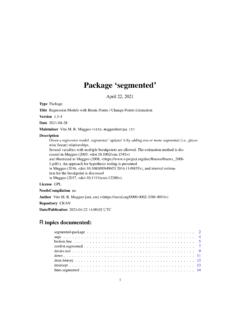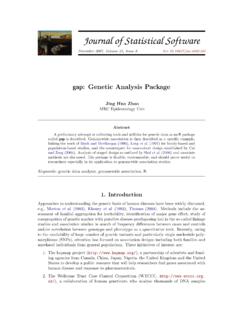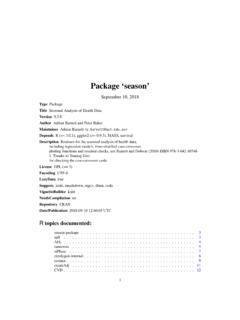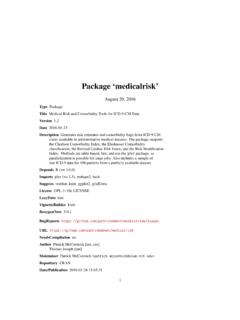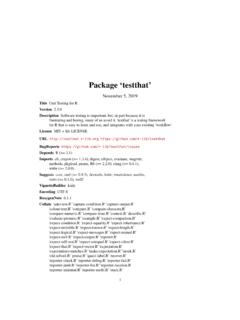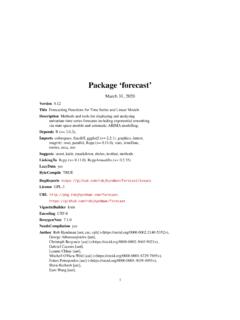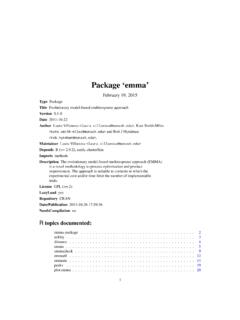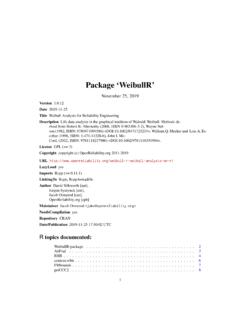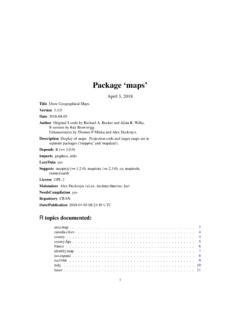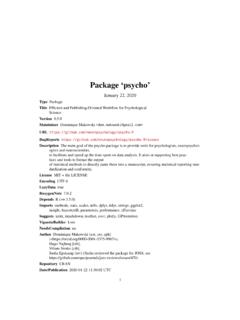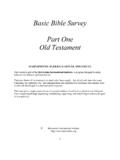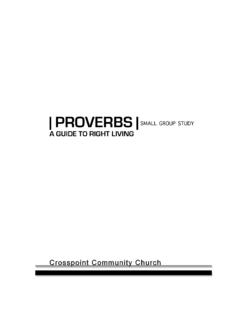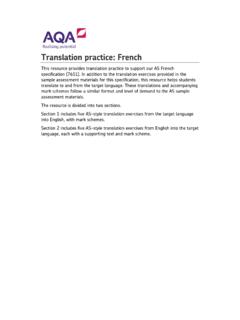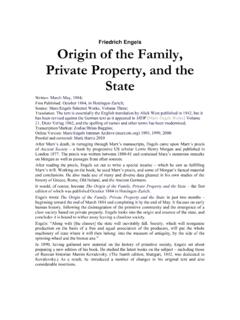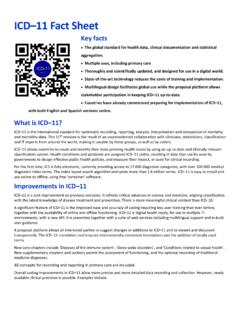Transcription of R Language Definition
1 R Language DefinitionVersion (2021-11-01)DRAFTR Core TeamThis manual is for R, version (2021-11-01).Copyrightc 2000 2021 R Core TeamPermission is granted to make and distribute verbatim copies of this manual providedthe copyright notice and this permission notice are preserved on all is granted to copy and distribute modified versions of this manual underthe conditions for verbatim copying, provided that the entire resulting derived workis distributed under the terms of a permission notice identical to this is granted to copy and distribute translations of this manual into an-other Language .
2 Under the above conditions for modified versions, except that thispermission notice may be stated in a translation approved by the R Core of Contents1 Basic types.. Vectors.. Lists.. Language objects.. Symbol objects.. Expression objects.. Function objects.. NULL.. Builtin objects and special forms.. Promise objects.. Dot-dot-dot.. Environments.. Pairlist objects.. The Any type.. Attributes.. Names.. Dimensions.. Dimnames.. Classes.. Time series attributes.
3 Copying of attributes.. Special compound objects.. Factors.. Data frame objects..83 Evaluation of Simple evaluation.. Constants.. Symbol lookup.. Function calls.. Operators.. Control structures.. if.. Looping.. repeat.. while.. for.. switch.. Elementary arithmetic operations.. Recycling rules.. Propagation of names.. Dimensional attributes.. NA handling.. Indexing.. Indexing by vectors.. Indexing matrices and arrays.. Indexing other structures.
4 Subset assignment.. Scope of variables.. Global environment.. Lexical environment.. The call stack.. Search path..214 Writing functions.. Syntax and examples.. Arguments.. Functions as objects.. Evaluation.. Evaluation environment.. Argument matching.. Argument evaluation.. Scope..245 Object-oriented Definition .. Inheritance.. Method dispatching.. UseMethod.. NextMethod.. Group methods.. Writing methods..306 Computing on the Direct manipulation of Language objects.
5 Substitutions.. More on evaluation.. Evaluation of expression objects.. Manipulation of function calls.. Manipulation of functions..387 System and foreign Language Operating system access.. Foreign Language interfaces..Internal and .Primitive..418 Exception stop.. warning.. Error options..42iii9 browser.. debug/undebug.. trace/untrace.. traceback..4410 The parsing process.. Modes of parsing.. Internal representation.. Deparsing.. Comments.. Tokens.
6 Constants.. Identifiers.. Reserved words.. Special operators.. Separators.. Operator tokens.. Grouping.. Indexing tokens.. Expressions.. Function calls.. Infix and prefix operators.. Index constructions.. Compound expressions.. Flow control elements.. Function definitions.. Directives..51 Function and Variable A IntroductionR is a system for statistical computation and graphics. It provides, among other things, a pro-gramming Language , high level graphics, interfaces to other languages and debugging manual details and defines the R R Language is a dialect of S which was designed in the 1980s and has been in widespreaduse in the statistical community since.
7 Its principal designer, John M. Chambers, was awardedthe 1998 ACM Software Systems Award for Language syntax has a superficial similarity with C, but the semantics are of the FPL(functional programming Language ) variety with stronger affinities with Lisp andAPL. In par-ticular, it allows computing on the Language , which in turn makes it possible to write functionsthat take expressions as input, something that is often useful for statistical modeling and is possible to get quite far using R interactively, executing simple expressions from thecommand line.
8 Some users may never need to go beyond that level, others will want to writetheir own functions either in an ad hoc fashion to systematize repetitive work or with theperspective of writing add-on packages for new purpose of this manual is to document the languageper se. That is, the objects that itworks on, and the details of the expression evaluation process, which are useful to know whenprogramming R functions. Major subsystems for specific tasks, such as graphics, are only brieflydescribed in this manual and will be documented much of the text will equally apply to S, there are also some substantial differences,and in order not to confuse the issue we shall concentrate on describing design of the Language contains a number of fine points and common pitfalls which maysurprise the user.
9 Most of these are due to consistency considerations at a deeper level, as weshall explain. There are also a number of useful shortcuts and idioms, which allow the userto express quite complicated operations succinctly. Many of these become natural once one isfamiliar with the underlying concepts. In some cases, there are multiple ways of performing atask, but some of the techniques will rely on the Language implementation, and others work ata higher level of abstraction. In such cases we shall indicate the preferred familiarity with R is assumed.
10 This is not an introduction to R but rather a pro-grammers reference manual. Other manuals provide complementary information: in particularSection Preface inAn Introduction to Rprovides an introduction to R andSection Systemand foreign Language interfaces inWriting R Extensionsdetails how to extend R using ObjectsIn every computer Language variables provide a means of accessing the data stored in does not provide direct access to the computer s memory but rather provides a numberof specialized data structures we will refer to as objects.
